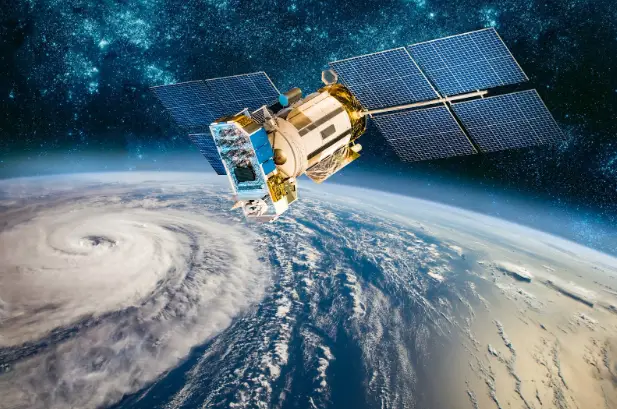Satellite Imagery In Agriculture: Crucial Characteristics For Effective Application

Agriculture is a necessary industry that provides the population of our planet with food. Remote sensing technology and data are transforming this sector, facilitating innovative ways for farmers to grow crops and livestock.
In the context of climate change, satellite-driven solutions are more critical than ever, as they enable farmers to adapt to changes and reduce the negative impact of this industry on the environment. Extreme weather events, rising temperatures, and other effects of climate change threaten agricultural productivity. Leveraging remote sensing technologies and analyzing high resolution satellite image data, the agricultural sector is paving the way to sustainability, ensuring continued productivity in an ever-changing environment.
History of Satellites in Agriculture
The first satellite was launched in 1957. For agricultural purposes, satellites began to be used about 20 years later when scientists could calculate the normalized vegetation difference index (NDVI). The values of this index help farmers understand what is happening with plant health in the fields. However, at that time, specialists could not get the maximum benefit from NDVI. It was connected to the low spatial resolution of satellite images (about 50 meters) and the inability to calculate the values of this index in cloudy weather.
In 2015, a satellite with a resolution of 10 meters became available, which led to a breakthrough in the use of satellites to meet the data needs of the agricultural industry. Thanks to the high resolution, the farmers can get the most accurate possible view of events in different areas of the farm. In addition, the invention and widespread use of applications for various devices has brought technology closer to farms, enabling growers to track NDVI in their fields conveniently.
Satellite Imagery Resolution & Accuracy: Main Metrics
Spatial Resolution
It is the most commonly used parameter in classifying images obtained from optical satellites, meaning the distance represented by a pixel in a satellite image. NASA Landsat images have a resolution of 15 meters. Accordingly, each pixel of such an image is a square measuring 15×15 meters on the Earth’s surface.
Commercial satellite imagery generally has a resolution of 2–5 meters. High-spatial resolution satellites take images with a resolution of 70, 50, and 30 centimeters. The amount of valuable information in each pixel depends on spatial resolution.
It is essential to understand that, depending on the goals and needs of users, not all images are equally helpful. Low- and middle-resolution imagery can be valuable for reviewing a large area and detecting shapes, colors, and large objects. Users who need to look at more minor elements and details choose images with high spatial resolution.
Temporal Resolution
It is necessary to distinguish between two kinds of satellites to understand the concept of temporal resolution. Polar-orbiting satellites orbit the Earth from one pole to another, which allows them to collect information about the entire planet.
Geostationary satellites observe one part of the Earth since they are stationary. For such devices, the temporal resolution is the interval between capturing two consecutive images (e.g., every 15 minutes as METEOSAT-11).
The temporal resolution of polar-orbiting satellites, means the time it takes a spacial device to revisit and capture the same site. This time is called the satellite revisit period. This parameter is crucial for performing tasks such as tracking and detecting changes. For example, it takes SENTINEL-2 satellite ten days to retake images of the same area, i.e., its revisit is ten days.
What is Accuracy?
Accuracy means the distance between the actual geographic position of an element compared to its position on a satellite image. It depends on the satellites’ positioning technology, the sensor’s viewing angle, and the terrain.
This metric is not directly related to image resolution. When a satellite sensor captures an image, its positioning device calculates its orbital position relative to the planet when the image is captured. This information is stored in the imagery metadata.
Satellite technology has been used in agriculture for many years. However, the last decade has been marked by the development and crucial achievements in the sector. Improvements in the quality of satellite images and the advent of high-resolution imagery have shaped many innovative approaches to satellite data applications. Satellite monitoring helps to understand the crop’s needs better and make better decisions on the allocation of resources, which simultaneously provides an opportunity to save money.
Implementation of the satellite-driven solutions and the growing capabilities of field monitoring provide farmers with the tools to increase field productivity, decreasing the negative impact on the environment. Improvement of the satellite imagery quality and data analysis helps growers to identify crop problems in time and take necessary measures.
